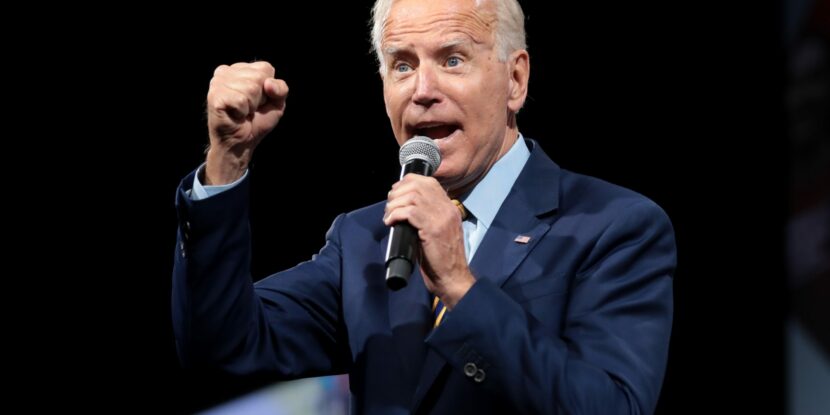What an anti-climax!
A race that began with roughly two dozen candidates – gripping the news cycle for well over a year – ended with a whimper as the nation remains laser-focused on the coronavirus crisis.
Senator Bernie Sanders announced the suspension of his campaign in a video message to supporters Wednesday. The story barely registered on the websites of major news outlets. It was scantly covered on television.
The race really began the moment Donald Trump won the presidency in the early hours of November 9, 2016. It began formally in January 2019 as major candidates began entering the race.
The entries of “rising stars” like Kamala Harris and Cory Booker excited Democrat voters, as did those of liberal stalwart Elizabeth Warren and socialist icon Bernie Sanders. But all along, it was former Vice President Biden’s race to lose.
Biden led the RealClearPolitics average of polls from the beginning, holding the lead except for one single day in October 2019, and a period of four weeks in February 2020. He was never anyone’s favorite candidate, but the aura of inevitability surrounding him was difficult for the other candidates to break through.
That isn’t to say Biden wasn’t threatened.
The race quickly became a mirror of the 2012 Republican presidential nomination, when the frontrunner Mitt Romney faced a rotating cast of candidates who, one at a time, rose to challenge him before fading out.
Harris sent an early scare through the Biden camp in a memorable moment in the very first debate where she challenged Biden’s record on civil rights with a compelling personal story. She briefly jumped in the polls, but couldn’t sustain the momentum.
Elizabeth Warren emerged as a “more electable” alternative to Sanders, and was the first one to overtake Biden in the polls. She then unveiled a detailed plan for Medicare for All, involving a massive expansion of government at an optimistic price tag of $21 trillion over 10 years. Once voters had to face the hard details of this leftist pipe dream dream, they rejected it, and Warren cratered.
Then there was the surprising rise of Mayor Pete Buttigieg, the 38-year-old from a small city in Indiana. The favored candidate of Wall Street and Silicon Valley. When voting finally started, Buttigieg placed first in the Iowa delegate count, in a caucus that was botched by the party. Mayor Pete then tied first in New Hampshire with Senator Sanders, causing Biden to literally flee the state.
A twist came with the highly-anticipated arrival of Michael Bloomberg, the billionaire who made a late entry into the race and spent a staggering sum of his own money to force his way onto the debate stage in February. But Liz Warren almost singlehandedly ended his campaign by confronting him over accusations of sexual harassment, for which the billionaire candidate appeared woefully unprepared.
Meanwhile, Biden lost Nevada, and the man who dominated the race since before he entered it appeared dead in the water.
Sanders – the most credible threat to Biden’s favored status – swept the popular vote in the first three states and appeared well on his way to the nomination.
Then came South Carolina, which Biden had called his “firewall”. It worked.
Biden sailed to an easy victory with nearly 50 percent of the vote. It was not a surprising result, but it was finally a shot in the arm to the Biden campaign: He had a pulse. And on Super Tuesday, Biden romped his way to 10 first-place finishes in 15 contests.
Then, the remarkable.
Nearly the entire Democrat Party cleared the field for Biden in order to stop Sanders. Pete Buttigieg and Amy Klobuchar ended campaigns that still had life in order to endorse Biden. Former rivals like Kamala Harris and Beto O’Rourke came out of the woodwork to do their part and endorse him. Bloomberg – after spending $935 million of his own money only to win four delegates in American Samoa – pledged his fortune to Biden.
Just like 2012, when Rick Santorum fought his way into a two-man race against Mitt Romney, Sanders was the last man standing against the frontrunner Biden.
The Democrat Party united under one banner, and it wasn’t “We Want Joe” – it was “Stop Bernie Sanders”.
Things got worse for Senator Sanders a week later when Michigan, which had delivered a key victory for him in the 2016 primary, went handily for Biden.
The coronavirus panic sent the country into virtual lockdown, and Sanders could no longer rely on the big rallies that fueled his rise to keep up whatever energy his campaign had left. Sanders held his own against Biden in an interesting two-man debate with no live audience, but it didn’t change the dynamic of the race. Biden swept Florida, Illinois, and Arizona, giving him victories in eight of the 10 states that went to the polls after the other Democrats cleared the field for him.
Sanders’s last stand was Wisconsin, which moved forward with a chaotic primary amid the coronavirus lockdown on Tuesday. Sanders had won the state handily in 2016. Results from Wisconsin have not even been released yet, but the Sanders campaign’s internal data must have shown that it was the final nail in the coffin.
And so here we stand, with the 77-year-old Biden having outlasted all comers and clinched the nomination in unprecedented circumstances.
Questions remain about Biden’s mental state, and there always remains the possibility that convention delegates will conspire in Milwaukee this summer to depose him in favor of someone else. Biden is not really anyone’s favorite candidate, and he will surely struggle to shore up the Democrat base behind him. But for now, the 2020 presidential election is set: Trump vs. Biden.
What a bizarre finish.


